1
What is a Rear-Facing car seat?
A Rear-Facing car seat, also known as infant car seat, is a portable safety seat consisting of a base and a shell like infant carrier into which your baby can be secured. When compared to leaving your infant unrestrained, these car seats reduce the risk of death/ injury to your baby by almost 90%5.
Why should I choose a Rear-Facing car seat?
A newborn's joints and spinal cord are very delicate and are at risk while travelling. A Rear-Facing car seat not only secures these joints, but also provides enhanced protection for your baby's head, neck and spine, which are not firm as yet. The Rear-Facing car seat shields the baby from any direct impact. In the event of a collision, the shell shaped interior absorbs the energy of the impact and the integral harness keeps the baby snuggled, as compared to a forward-facing car seat. For this reason, experts recommend Rear-Facing car seats for as long as possible, that is, until the child is able to sit on own or has exceeded the prescribed weight limit for the specific category.
Reference:
2
Which one will fit my Infant?
On the basis of characteristics, infant car seats have been broadly categorized into three categories:
Remember: Although the groups are generally divided based on age, you might want to choose the group depending on the weight of your child.
- Group 0
- Group 0+
- Group 0+ & 1
- Group 0 Choose this if your child is weak or premature and needs extra care.
-
Infant Carriers or Carry Cots which can be secured by seat belts in the rear seat of the car are used for this group. These car seats are designed for vulnerable infants like premature babies, babies who suffer from apnea, or weak babies with low birth weight. Experts however recommend that these car seats be used for your baby's early months, even if your baby is healthy and not suffering from any of the above problems.
Specifications
Position Lying (in carrycot), rear facing, lie-back orientation, no airbags (with the exception of curtain airbags in selected models). Recommended Weight Up to 09 kg(20 lbs) Approximate Age Birth to 09 months Recommended Height As per seat construction Best Buy Period Keep it ready before your child arrives. You would need to use this when you take your baby home for the first time, from the hospital. Lasts About 09 to 15 months depending on the child's growth. *Standards vary for different manufacturers.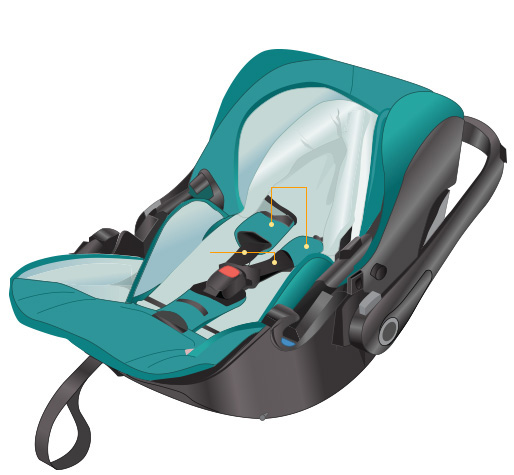 1
2
3
4
5
6
7
8
9
Group 0 Car Seat - View on FirstCry.com
1
2
3
4
5
6
7
8
9
Group 0 Car Seat - View on FirstCry.com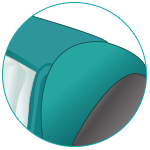 1 Side-impact protection
1 Side-impact protection
for providing protection from side impact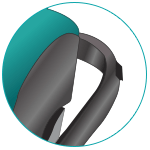 2 Multi Position Handle
2 Multi Position Handle
Multi Position Handle The multi function handle is especially handy for car seat as it enables mounting, reclining, sitting, rocking and carrying.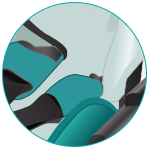 3 A Low Shoulder Harness Position
3 A Low Shoulder Harness Position
To fit your newborn baby in to car seat as per his/her birth height.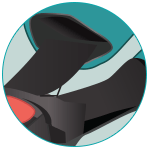 4 Adjustable Harness
4 Adjustable Harness
To adjust harness to fit your baby in to car seat as per his/her growing height.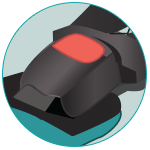 5 3 point safety harness
5 3 point safety harness
A 3-point belt is a Y-shaped arrangement. Two straps securing both shoulders and one at the crotch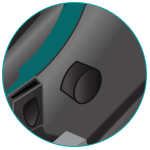 6 Canopy
6 Canopy
To provide shade to sleeping baby.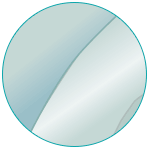 7 Positioning pad
7 Positioning pad
To provide body support to babies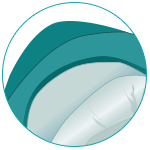 8 Removable cover
8 Removable cover
To wash and clean, to maintain hygiene of the baby.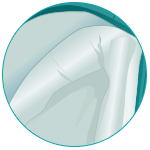 9 Removable head rest
9 Removable head rest
To provide head and neck support to babies under 6 monthsWhat should I look for, in a Group 0 Infant Car Seat? In addition to the General features, below are tailored specifications for Group 0 Car Seat:Expert's Recommendation- 5-point harness (C) (for securing baby through five straps - two at the shoulders, two at the hips and one at the crotch, all connected through a buckle release mechanism.)
- Side-impact protection Compatibility with the LATCH system (C) (for providing protection from side impact)
- EPS/EPP(C) Foam (for providing a strong base to the car seat in order to protect effectively)
- Anti-rebound bar (C) (for stabilizing the seat to minimize rotational forces and for preventing seat rebound)
- A Low Shoulder (up to 8 inches) Harness Position (C) (to fit baby's varying sizes)
- Adjustable Harness (to fit baby's varying size)
- Handles (to snap the baby in and out of the car easily)
- Five degree surface (to raise infant's head for efficient breathing)
- Patented wrap-around harness surface (for additional protection during a sudden stop or crash)
- Deep, fully padded shell (for combining impact protection with ventilation)
- Level indicators (for proper installation)
- Aircraft Approved (for child's safety during air travel)
Good to have- Machine-washable padding (for convenient cleaning)
- Positioning Pads (assists the accurate positioning of your baby)
- Easy to Install system (to enable portability and multiple vehicle usage)
- Extra padded inner lining (for convenience)Cushier fabric (for convenience)
- Large adjustable canopy (for your baby's comfort)
- Removable head pillow (for your baby's comfort)
- Built-in toys (to keep your baby calm and happy)
- Pockets for storage (to help you store stuff during travel)
Choose this if your child is weak or premature and needs extra care.
- Group 0+ Choose this if you are looking for the most convenient mode of travelling with your baby in your baby's early months
-
As a surrogate of Group 0 car seats, these car seats have been designed to last longer and are meant for healthy children. These car seats administer front & side impact protection and cater to greater protection for the baby's head, neck and spine. These carriers also secure the baby in Rear-Facing position using a standard adult seat belt and/or with an ISOFIX fitting and are equipped with handles for moving the car seat in and out of the car with ease. Turning up the given handles makes it a carrycot and clicking onto the stroller frame converts it into a pushchair. And all this can be done without so much as waking the baby up.
Specifications
Position Sitting, rear facing, no airbags (with the exception of curtain airbags in selected models). Recommended Weight Up to 09 kg(29 lbs) Approximate age Birth to 15 months Recommended Height As per seat construction Best Buy Period Keep it ready before your baby arrives. Lasts About 09 to 24 months depending upon the growth rate of your baby and size of the seat. *Standards vary for different manufacturers.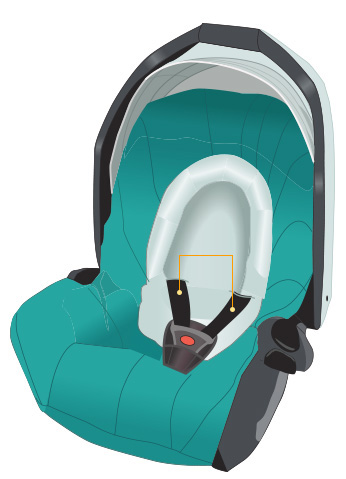 1
2
3
4
5
6
7
8
9
Group 0+ Car Seat - View on FirstCry.com
1
2
3
4
5
6
7
8
9
Group 0+ Car Seat - View on FirstCry.com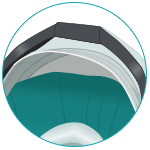 1 Large adjustable canopy
1 Large adjustable canopy
To provide shade to sleeping baby.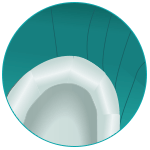 2 Soft cushioning
2 Soft cushioning
To make baby comfortable by giving soft cushier support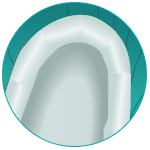 3 3 Removable head rest
3 3 Removable head rest
To provide head and neck support to babies under 6 months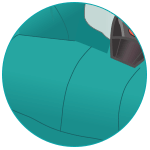 4 Padded seat
4 Padded seat
To make baby comfortable by giving cushier soft seat.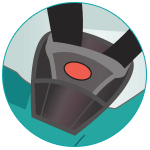 5 3 point safety harness
5 3 point safety harness
A 3-point belt is a Y-shaped arrangement. Two straps securing both shoulders and one at the crotch.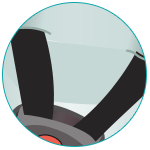 6 Adjustable Harness
6 Adjustable Harness
Adjusts length of the harness straps to fit your child's height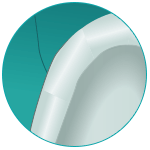 7 Side-impact protection Compatibility
7 Side-impact protection Compatibility
To provide protection from side impact in case of collision. 8 Removable cover
8 Removable cover
The multi function handle is especially handy for car seat as it enables mounting, reclining, sitting, rocking and carrying.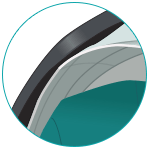 9 Position Adjustable handle
9 Position Adjustable handle
The multi function handle is especially handy for car seat as it enables mounting, reclining, sitting, rocking and carrying.What should I look for, in a Group 0+ Infant Car Seat? In addition to the General features, below are tailored specifications for Group 0+ Car Seat:Expert's Recommendation- 5-point harness (C) (for securing baby through five straps - two at the shoulders, two at the hips and one at the crotch, all connected through a buckle release mechanism.)
- Side-impact protection Compatibility with the LATCH system(C) (for providing protection from side impact)
- Anti-rebound bar (C) (for stabilizing the seat to minimize rotational forces and to prevent seat rebound)
- Adjustable Harness (to fit the varying size of baby)
- 5-position handles (to snap the baby in and out of the car easily)
- Patented wrap-around harness surface (C) (for additional protection during a sudden stop or crash)
- Permanently fixable CHASSIS(C) (for optimum safety)
- 3 point belts (C) (for optimum safety)
- Harness sleeves and quick release buckle (C) (to stabilize when moving baby)
Good to have- Body support cushions for younger children (for baby's comfort)
- Padded seat (for baby's comfort)
- Removable cover (for convenient cleaning)
- "Boot" around baby's feet (for stabilizing baby's moving feet)
- Extra padded inner lining (for baby's comfort)
- Extra padded inner lining (for baby's comfort)
- Cushier fabric (for baby's comfort)
- Lateral Headrest (for baby's head movement adjustment)
- Large adjustable canopy (for baby's comfort)
- Removable head pillow (for baby's comfort)
- Built-in toys (for keeping baby calm and happy)
- Pockets for storage (to store stuff during travel)
Choose this if you are looking for the most convenient mode of travelling with your baby in your baby's early months
- Group 0+ & 1 Choose this if you have a big vehicle and are looking for enhanced security features for your child
-
Conventionally equipped with chassis, these car seats are integrated with handles and are strapped using an adult seat belt. They are bulky, and are recommended only for big vehicles, since they occupy a relatively large space in your car. Like other infant carriers, these car seats also offer Rear-Facing positions and provide robust features and enhanced security for your child. Although these larger car seats secure your child's head effectively during a moment of sudden deceleration. and also require space for additional straps. These car seats are meant for specific vehicles, which makes them less sought after, though they are available.
Specifications
Position Sitting, rear facing, no airbags (with the exception of curtain airbags in selected models). Recommended Weight From birth 2-3 kg (4-6 lbs.) Up till 13 kg (29 lbs.) Approximate Age Birth to 15 months Height As per seat construction Best Buy Period Keep it ready before your baby arrives, and use it for his/her first ride homewards. Lasts About 09 to 24 months depending upon the growth rate of your baby and size of the seat. *Standards vary for different manufacturers.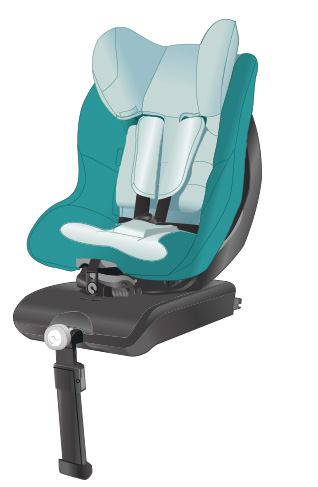 1
2
3
4
5
6
7
8
Group 0+ & 1 Car Seat - View on FirstCry.com
1
2
3
4
5
6
7
8
Group 0+ & 1 Car Seat - View on FirstCry.com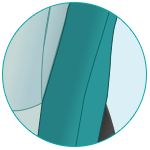 1 Removable cover.
1 Removable cover.
To wash and clean, to maintain hygiene of the baby.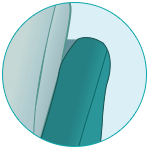 2 Side-impact protection Compatibility
2 Side-impact protection Compatibility
To provide protection from side impact in case of collision.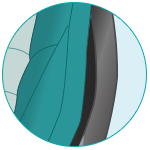 3 Multi-recline positions
3 Multi-recline positions
Multi-recline positions Any angle less than 150 degrees will be unsafe for an infant, since babies can't sit in an upright position until they're about 6 months old.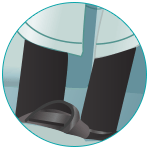 4 Adjustable Harness
4 Adjustable Harness
To fit your newborn baby in to car seat as per his/her birth height.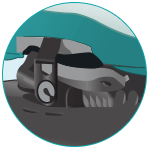 5 Recline adjustment lever
5 Recline adjustment lever
To set a comfortable reclining position for the baby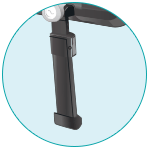 6 Support leg
6 Support leg
To prevent the seat from rotate forward in a collision.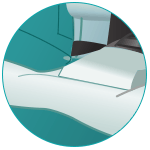 7 Padded seat
7 Padded seat
To make baby comfortable by giving cushier soft seat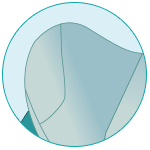 8 Adjustable Headrest
8 Adjustable Headrest
To provide head and neck support to babies under 6 monthsWhat should I look for, in a Group 0+ &1 Infant Car Seat? In addition to the General features, below are tailored specifications for Group 0+ & 1 Car Seat:Expert's Recommendation- 5-point harness (C) (for securing baby through five straps – two at the shoulders, two at the hips and one at the crotch, all connected through a buckle release mechanism.)
- Individual harness tensioner (C) (for effective safety)
- Multi-recline - 4 recline positions (for accommodating different positions of baby e.g. sleeping, sitting etc.)
- Side-impact protection Compatibility with the LATCH system (C) (for providing protection from side impact)
- EPS/EPP Foam (C) (for providing strong base to the car seat in order to protect effectively)
- Anti-rebound bar (C) (for stabilizing the seat to minimize rotational forces and for preventing seat rebound)
- Adjustable Harness (to fit the varying size of baby)
- 5-position handles (to snap the baby in and out of the car easily)
- Patented wrap-around harness surface (C) (for additional protection during a sudden stop or crash)
- Permanently fixable CHASSIS (C) (for optimum safety)
- 3 point belts (C) (for optimum safety)
- Harness sleeves and quick release buckle (C) (to stabilize when moving baby)
- Deep internal padding plus harness pads (C) (for enhanced safety)
- 5-position handle: carry, rest, rocker, stable, installation (for easy portability)
- Aircraft Approved (for child’s safety during air travel)
Good to have- Wider weight and height capacity (to accommodate toddler phase also in Rear-Facing position)
- Body support cushions for younger children (for baby’s comfort)
- Padded seat (for baby’s comfort)
- Removable cover (For convenient cleaning)
- "Boot" around baby's feet (for stabilizing baby’s moving feet)
- Extra padded inner lining (for baby’s comfort)
- Cushier fabric (for baby’s comfort)
- Large canopy (for baby’s comfort)
- Lateral Headrest (for baby’s head movement adjustment)
Choose this if you have a big vehicle and are looking for enhanced security features for your child.
3
Benifits & Limitations
Here is a comparative analysis of all the categories under the Rear-Facing child car seats. This will give you a bird’s eye view of all the pros and cons and help you with your buying decision.
| Benefits | Group 0 | Group 0+ | Group 0+ & 1 |
|---|---|---|---|
| Portability | |||
| Handling Convenience | |||
| Convertible to infant carrier | |||
| Convenient for multiple cars | |||
| Individual harness tensioner | |||
| Multi-recline - 4 recline positions | |||
| Enhanced Security | |||
| Offers both Rear-Facing and forward-facing positions |
| Limitations | Group 0 | Group 0+ | Group 0+ & 1 |
|---|---|---|---|
| Most kids outgrow the seat within few months | |||
| Should only be used for travel via car and not for any other activity outside the car | |||
| Non-portable and Bulky | |||
| Cumbersome | |||
| Expensive |
negative
positive
no
yes
4
How to Buy
Now that you know what to look for in a Rear-Facing car seat across the groups 0, 0+, 0+and 1, find out how to
go about determining whether these features are tailor made for your child to take an informed buying decision.
Make sure to push back the seat padding as though pushed back by child’s weight and measure the seat using a measuring tape.
Look out for a low shoulder, small and adjustable harness. It is always better to choose according to your child’s measurements.
Check for adjustable buckles. Check how convenient it is open and put back.
Look out for the distance of the adjustable crotch buckle from the seat’s back surface. Check how convenient it is to open and put back.
Look out for an adjustable handle as most car seat models require that the handle be lowered during travel.
Make sure to recline in all defined positions and check for comfort in each.
Look for robust security features and a strong comfortable base.
Check if the seat fits well in your car and can be customized according to your baby’s needs.
Look out for portability or use in multiple vehicles. Check by converting it into a carrier and pram etc.
Check recommended feature labels, safety instructions and user manuals.
Buying car seats online from a trusted website will save you the trouble of testing all these details
yourselves, as the website will provide the images of all the necessary features and certify the product before putting it up
for sale. You can also access reviews, opinions of other users, ratings etc. from the comfort of your home. Just ensure that you
choose a product with a reasonable return policy, so that in the event you require a replacement, the process is easy.
5
The Truth about those Common Myths
I grew up fine without a car seat, so will my child. I think my child is safe even without one.
You were fortunate enough to endure without a car seat, but it was not the safest of moves.
Also, this does not imply that you can expose your baby to dangers. Safety is mandatory for everyone.
My child would not be travelling much in the car, so buying a car seat seems such a waste.
It does not matter how frequently your child travels with you. Even if your child will travel with you just once,
when you go home from the hospital, it is your responsibility to ensure his/her safety. Accidents never come with a forewarning.
You must be ready with a car seat before your child arrives for his/her first journey homeward.
A child car seat is not comfortable for my child.
This will not be a concern if you are using the correct child car seat for your child’s age and weight.
Also, make sure you are following all the guidelines correctly. Safety and comfort, are the key factors kept in mind while
designing and manufacturing any child car seat. Car seats are designed to keep your baby comfortable even during long journeys.
A child car seat never works. Securing it is a hazard too!
It has been statistically proven that children who were buckled to their car seats were ten times
safer as compared to those seated unrestrained. A child car seat reduces the risk of death in infants by 71 %
6A child car seat is the safest choice for your child during travel. Good car seats from reputed manufacturers are always
easy to install and secure. You need only ensure that the car seat is installed in accordance with the provided guidelines.
My baby’s legs are too big for a Rear-Facing car seat.
Rear-Facing car seats are designed keeping baby’s body structure in mind. Your baby is absolutely safe,
even if his/her legs are bent at the knees or he/she can touch/kick the vehicle seat.
I can carry my infant in forward-facing position too.
It is strictly recommended to avoid forward-facing position for infants. Your child must travel in a
Rear-Facing position for as long as possible.
We shall not cover long distances. Safety seat is not required for small distances.
Whether you’re travelling cross country or just around the corner, your baby needs to be safe, and there’s no telling when
disaster might strike. Routine trips are often the ones that are deceptively dangerous.
6
FAQs
Q
Why is Rear-Facing position important for a baby?
In a frontal crash (the most common and most severe type of crash), the head is thrown forward,
but the body is held back. While older children and adults are protected with seat belts, a baby’s delicate neck,
head and spinal cord are protected by spreading force through the back, which is not possible in a forward-facing position.
Q
Do I need a base with my infant car seat?
A base is an accessory to the infant car seat and need not necessarily be installed along with it.
In certain situations like air travel, you may even be required to remove it to get a secure fit.
Q
What is the proper recline angle for my child’s infant seat?
For an accurate angle, you should match the level lines on the side of the plastic shell with the ground level.
The angle arrived at with this method, works best, even for older children. If your car seat model has a ball as an angle indicator,
then the ball should be between the two marks on the indicator that matches the weight of your child. In most cases,
it is found to be a maximum of 45 degrees.
Q
I have an airbag in the front seat of my car. Should I place my child’s car seat in front of the airbag? Would it be the safest place for the child car seat?
No, a child car seat is always the safest in the back seat, as opposed to the front seat,
despite the car being equipped with an airbag in the front. The back seat reduces the chances of injury
and death by more than 30%.7
Reference:
